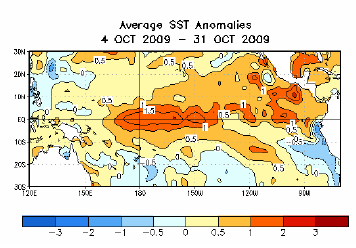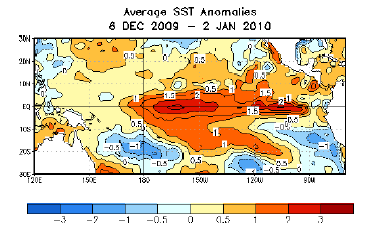These developments are welcomed and needed given that the world population currently stands at almost 6.8 billion people and that an extra 75 million people entered our planet last year or approximately 210,000 every day according to the US Census Bureau.
We, as a “global community” need to cultivate greater quantities of food on a shrinking surface area of cultivable land mass, with less water and less synthetic inputs. The challenge ahead of us is immense, and warrants more attention than supposedly futuristic developments of the last century such as space exploration.
Scientists have now explored all levels of biological systems from the individual molecules in chromosomal DNA, cellular communication, organs, organisms, communities and the study of populations of organism’s over vast spaces of territory such as countries and continents. One approach to studying patterns of the global food supply in which we are interested is through the atmospheric and oceanic science and is the theme of this bulletin.
The Driver of the Earth’s Weather
Land covers 29 per cent of the earths’ surface. Total ice free global land area is estimated at 130.6 million km2, of which only 16.5 million km2 or 12.6 per cent of this surface area is free of constraint for most agricultural uses. The physical laws that govern heat exchange in oceans and the atmosphere are predictable, but the localised way in which weather patterns manifest themselves are more difficult to analyse requiring complex mathematical models and geographic sampling techniques.
On a global level, one of the most studied and largest oceans is the Pacific and it asserts a significant influence over the climate of the “pacific ring of fire countries” that surrounds it. The most important oceanic-atmospheric interaction that exists in the Pacific Ocean is called El Niño-Southern Oscillation (ENSO). The extent of ENSO is analysed throughout the Pacific by continually monitoring sea surface temperatures, predicting variance and forecasting weather patterns.
Variations above or below the usual average sea surface temperatures in different locations around the ocean provide an indication of what weather conditions prevail. The range in these temperature variations are only slight, being a few degrees above or below the normal values; however these thermal variations drive the movements of huge masses of oceanic water and in turn affect the biological productivity of the oceans as well as controlling rainfall, winds, solar radiation and fishing catches. The diagram below shows the spatial changes in the Mid Pacific between Oct 2009 and Jan 2010. It can be seen how the warmer than usual temperatures in red are moving in a west to east direction bringing warmer sea surface temperatures from the coast of Australia and Indonesia to Ecuador, Peru and Chile indicating a strengtheing El Niño event. The last El Niño of the strength that we are currently witnessing was in 1998.



Sources and Importance of Dietary Protein
Commercial protein for human consumption at base level is basically available from two sources. It can either be grown as plant proteins such as soya or it can be fished from the sea as it becomes bioaccumulated in the food chain from the original producers which are marine algae. Of theses two sources, conventional arable agriculture in the form of Soya provides around 92 per cent of the total supply. The Eastern Pacific Ocean along the coasts of Peru and Chile provide a valuable source of marine proteins with an excellent amino acid profile in the form of anchovies.
The commercial annual supply of around 12 million metric tonnes of small fish from this region is mainly used as a component of aquaculture feeds on world markets which dominate global commodity trade. World production of fishmeal in 2009 was 4.9 million metric tonnes and world production of soybean meal was 158 million tonnes. The main producers of soybeans are US, Argentina, Brazil, Paraguay, Uruguay and China. It can be seen how the influence of oceanic events such as ENSO has a great affect on the supply of both of these sources of valuable protein, either by oceanic nutrient current flows corresponding in fish production or by atmospheric weather patterns corresponding in rainfall levels and crop growth.
Economically, protein is the most expensive dietary component. Protein is the most important of the cell metabolic components, and is constantly in a dynamic state of synthesis and breakdown. Proteins are synthesised from amino acids in the diet. Since nitrogen is continuously lost from the body, the supply of protein must be replenished daily. It can be argued that as protein is the most expensive and physiologically the most important dietary component then maximisation of its efficient delivery to the human food chain is of utmost importance.
Aquaculture is the most efficient supplier of protein to the human diet. This is because fish have lowest feed conversion ratio (FCR) of any farmed animal. In recent years some farmers have claimed to get a biological FCR of less than 1, though in reality it is closer to 1.2 on a commercial level of production. This low FCR means that aquaculture results in fish production being the best converter of feed into protein based food. Commercial conversion of animal feed into meat and fish can be summarised as follows:
| 100kg Feed produces | 13kg of pork fillets or |
| . | 20kg of chicken fillets or |
| . | 65 kg of salmon fillets |
Commercial Solutions to Environmental Challenges
The first decade of the 21st Century witnessed increases in protein production outputs by increases in animal feed inputs. Now that we are entering the second decade of the century there is danger of over-complacency concerning the growing supply and demand balance in the animal feeds sector. There are physical and biological limits to commercial productivity at the bottom of the feed chain, and every annual increase in production comes closer to this invisible limit. This is without even including the other side of the coin into the equation which concerns the social and ethical considerations of food production.
The routine use of antibiotics for animal production as a tool for improved productivity will certainly become less common than it has been in past years due to antibiotic resistance becoming more problematic. Some people consider that a solution to drug discovery could be in the chemicals in either plants or animals in undiscovered regions of the tropical rainforest or other parts of the world which still haven’t been fully explored by humanity. However it is also true that some discoveries are already known, they just need to be adequately implemented throughout the world of commerce in order for their benefits to be understood.
Meriden Animal Health Limited already has a commercial range of products which have been designed to improve the productivity and efficiency of utilisation of animal feed whilst also providing return on investment for the end users.
Orego-Stim® Aquatract promotes growth and better feed utilization leading to lower FCR’s and a greater return on investment. It improves health status and assists in times of stress while providing a distinctive aromatic flavour in feed. The main achievements in the development of this product have been to hold and capture the active ingredients of Orego-Stim® Aquatract Liquid & Powder within the product until consumption within the target fish or shrimp. This has been done by developing a liquid & powder that can be applied either at the farm or in the feed mill that will offer continued adhesion during the aqueous environment. It forms a water repellent inert protective coating which guarantees high rates of administration of the active ingredients to the fish or shrimp.
Up to 80 per cent of the total phosphorus contained in grains and oilseeds such as soybean meal is relatively unavailable to the monogastric animals, because it is bound as phytate or phytic acid and livestock cannot effectively utilize this essential nutrient nor the dietary components associated with it.
Meri-Phyze 5000 contains phytase which breaks down indigestible phytate and phytic acid leading to improved digestibility of nutrients such as amino acids, calcium and other nutrients.
Meriden Animal Health Limited will shortly be launching their latest product, an advanced mycotoxin binder, ammonia binder and anti-caking agent with a very high cation exchange capacity which selectively binds mycotoxins and ammonia whilst leaving behind vitamins, minerals and other nutrients.
This mycotoxin binder is the only one of its kind. It has a “threepronged attack” to eliminate mycotoxins from feeds whilst simultaneously boosting immunity and adding key nutritional components to the diet. The individual components have specific modes of action that will benefit the animal on their own, but Meriden has fused these technologies together to work in harmony and improve overall performance. All of these Meriden Animal Health products are now available for use in shrimp and fish aquaculture feeds.
Conclusions
We live in times of change. This article has raised awareness about how the global food commodity trade for the animal feeds sector depends upon oceanic and atmospheric interactions that are out of the control of farmers and feed manufacturers. It has highlighted the realities of the difficulty in maintaining the status quo of feed production in light of population increase and agricultural land use. However rather than just accepting these changes as they happen, it explains how Meriden Animal Health products offer future thinking solutions to these problems by improving efficiency of productivity at levels of commercial economic reality.
February 2010


